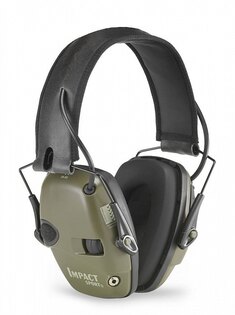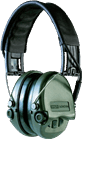In 1937, Honeywell®, then still Minneapolis-Honeywell®, became a leader in the American market with an annual revenue of $16 million and 3,000 employees. However, the path to such a rise was very steep.
What is Honeywell®? When mentioning this American manufacturer, many people think of a very handy home thermostat system. The rest either imagine nothing or start translating the company’s name into Czech and guessing. Only a small percentage know that Honeywell® is a world leader in many fields. Besides heating solutions, it is involved in the space program, aviation, computers, and even military forces. Interesting, right? How did this giant start and what can it offer today? What products can you find with us? In the following article, I would like to write a bit about this. Hopefully, next time, besides the thermostat, we will remember other contributions, fields, and products of this purely American company.
First, let me tell you a few basic numbers to make it clear what Honeywell® really is. The company was founded by one person in 1906 – Mark Honeywell. The original base was in Indiana, today it has been moved to New Jersey. It is a global company with dozens of subsidiaries and hundreds, if not thousands, of projects. Currently, the company has 131,000 employees and annual revenue of over 40 billion dollars (still growing).
The last net profit of the company in 2017 was 1.65 billion dollars. Decent, right? Something tells me they don’t earn that just from thermostats.
Hard beginnings
Although the company was founded in 1906, its roots go back to the 19th century, specifically to 1885. That year, Albert Butz patented his new invention, an automatically regulated thermostat for coal heating. The following year, he founded the Butz Thermo-Electric Regulator Company. It seems that back then, names weren't derived from fruits. In 1888, a decline occurred, so Butz and his investors transferred the patents to the legal firm Pail, Sanford, and Merwin, which immediately renamed itself to the Consolidated Temperature Controlling Company. Unfortunately, bad luck followed them, they suffered what is called growth debt. There were a few name changes, a few restructurings. In the end, in 1893, most of the patents were sold to a single shareholder. This shareholder was W.R. Sweatt, who in that same year became the secretary and head of finance. Five years later, in 1898, he bought the remaining shares and thus became the sole owner. The company later renamed to the Minneapolis Heat Regulator Company.
However, Mark Honeywell was already here with his Honeywell Heating Speciality Company founded in Indiana. The intention was clear – modern solutions for thermal regulations and systems. This way, he wanted to sell the latest technologies, his patents. In 1922, Mark bought the Jewell Manufacturing Company, which benefitted his business mainly with technological solutions and automation.
Thanks to rapid growth, Mark Honeywell found himself in an economic conflict with the now-prosperous W.H. Sweatt and his MHRC. This struggle resulted in the merger of both companies and the renaming of the newly formed empire to the Minneapolis-Honeywell Regulator Company, in 1927. The merger mainly happened because both companies had patents that blocked each other’s development. Mark was elected as the company president and Sweatt as the chairman. Mark was in leadership until 1933.
Rise of the empire
Since 1927, everything went in the right direction. Surviving Black Friday and the global crisis, both world wars, and many obstacles, the expansion first throughout America, then Europe and the rest of the world continued. I must point out that such success is primarily due to W.R. Sweatt and his son, who led the company for 75 years. Their system was simple and at the same time genius. With the driving force of several million dollars available at the beginning of the 1930s, they bought smaller companies with interesting patents. This way, they practically bought new, unique technologies that complemented their intention. In 1934, the company made its first international expansion. The first was Canada, the Netherlands, followed by London, and others. It's unbelievable that 10 years after the merger, in 1937, the company had 3000 employees and more than 16 million dollars in annual revenue.
We won’t go into detailed storytelling, although I would like to. I’ll just mention a few more milestones that were important for the company. Military contracts were very important. Here, the company helped develop targeting technology but primarily – the development of the autopilot. The then C-1 was used in many bombers during WW2.
The C-1 was also mounted on the B-29 Enola Gay bomber, which dropped the Little Boy atomic bomb on the Japanese metropolis Hiroshima.
More advanced versions of the autopilot were used for many decades. It could even take off automatically. In 1953, Honeywell introduced its most famous product – the T-86 Round thermostat, an automated thermostat for home heating. From the 50s to the 70s, Honeywell® collaborated with the Japanese company Asahi Optical. They focused on importing and developing Pentax cameras. Honeywell also contributed to the development of computers, computer systems, aviation, and last but not least, security technologies. In the early 80s, Honeywell® also ventured into the space program. Today, the head of Honeywell® is Darius Adamczyk.
As you can see, the company is much more than a thermostat manufacturer, despite starting with them. Through them, it has evolved to the current form, where it helps in almost all industries you can think of.
Did you know that Honeywell® is part of the consortium operating the Pantex plant, which consolidates all atomic bombs in the American arsenal? Impressive, right?
Today’s contribution
Now that we know what Honeywell® is, we can look at the divisions that are the most significant today. Besides thermostats and comprehensive heating and thermal industry solutions, there’s the military sector, where it mainly deals with automation technologies. We can also mention its contributions in industry, aviation, and transportation. Honeywell also operates in the field of security. It has its own camera and security systems. Other divisions include the chemical-technical industry, material research and development, and many others.
What interests us?
If you are wondering how Honeywell® can help you. If you’re not building a house and don’t want their thermal regulation system, it’s simple. The company indeed offers a lot of products, some of which are sold under a different brand, but those we are interested in here are shooting earmuffs, which are very well processed. In some aspects, they can compete with the well-known Peltor. As you can see, Honeywell® is really almost in everything.











































































































































